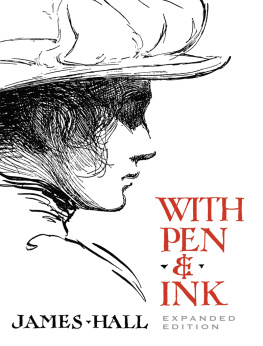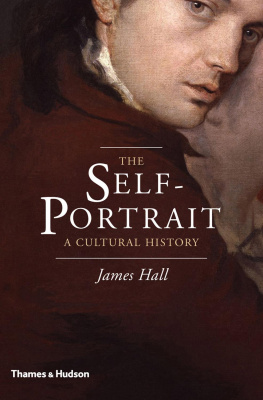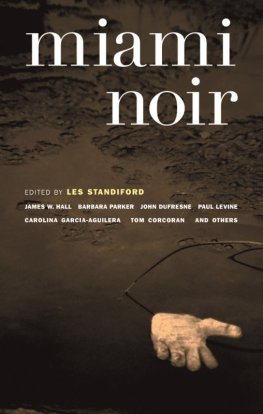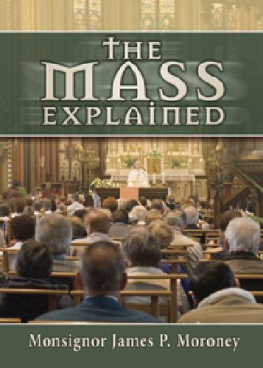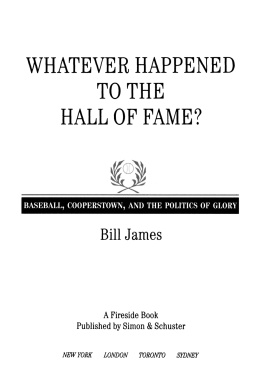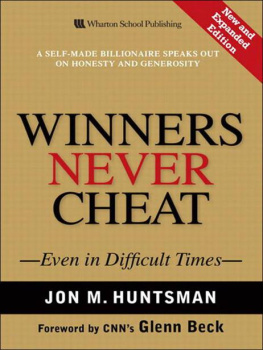James Hall - With Pen & Ink: Expanded Edition
Here you can read online James Hall - With Pen & Ink: Expanded Edition full text of the book (entire story) in english for free. Download pdf and epub, get meaning, cover and reviews about this ebook. year: 2020, publisher: Dover Publications, genre: Children. Description of the work, (preface) as well as reviews are available. Best literature library LitArk.com created for fans of good reading and offers a wide selection of genres:
Romance novel
Science fiction
Adventure
Detective
Science
History
Home and family
Prose
Art
Politics
Computer
Non-fiction
Religion
Business
Children
Humor
Choose a favorite category and find really read worthwhile books. Enjoy immersion in the world of imagination, feel the emotions of the characters or learn something new for yourself, make an fascinating discovery.
- Book:With Pen & Ink: Expanded Edition
- Author:
- Publisher:Dover Publications
- Genre:
- Year:2020
- Rating:5 / 5
- Favourites:Add to favourites
- Your mark:
- 100
- 1
- 2
- 3
- 4
- 5
With Pen & Ink: Expanded Edition: summary, description and annotation
We offer to read an annotation, description, summary or preface (depends on what the author of the book "With Pen & Ink: Expanded Edition" wrote himself). If you haven't found the necessary information about the book — write in the comments, we will try to find it.
With Pen & Ink: Expanded Edition — read online for free the complete book (whole text) full work
Below is the text of the book, divided by pages. System saving the place of the last page read, allows you to conveniently read the book "With Pen & Ink: Expanded Edition" online for free, without having to search again every time where you left off. Put a bookmark, and you can go to the page where you finished reading at any time.
Font size:
Interval:
Bookmark:

Copyright
Copyright 2020 by Dover Publications, Inc.
Foreword Copyright 2020 by Jeff A. Menges
All rights reserved.
Bibliographical Note
This Dover edition, first published in 2020, is an unabridged republication of the work originally published by The Prang Company, New York, in 1913. The present edition has been expanded with a gallery of additional illustrations selected by Jeff A. Menges, who has also written a Foreword for the modern reader.
Library of Congress Cataloging-in-Publication Data
Names: Hall, James, 18691917, author. | Menges, Jeff A., editor.
Title: With pen & ink /James Hall; foreword for the modern reader by Jeff A. Menges.
Other titles: With pen and ink
Description: Expanded edition. | Mineola, New York: Dover Publications, Inc., 2020. | Includes bibliographical references.
Identifiers: LCCN 2019054444 | ISBN 9780486841922 (paperback)
Subjects: LCSH: Pen drawingTechnique.
Classification: LCC NC905 .H18 2020 | DDC 741.2/6dc23
LC record available at https://lccn.loc.gov/2019054444
Manufactured in the United States by LSC Communications
84192801
www.doverpublications.com
2 4 6 8 1 0 9 7 5 3 1
2020
CONTENTS
LIST OF ILLUSTRATIONS DECORATIVE PEN DRAWINGS
NEW GALLERY OF ILLUSTRATIONS
(following page

FOREWORD FOR THE MODERN READER
L INES drawn in ink produce bold statements on paperthey are definitivetheir placement on the surface is either black or white. Constructing visual representations from these marks can be refined to a skill, and for some, even be made into an occupation. When James Hall wrote With Pen and Ink in 1913, he had already been teaching Art in New England and New York, and saw ink work as a practical art form to be instructed in schools. Newspapers and magazines were boomingas were booksand the primary method to create illustrations for their use was by drawing with ink.
The same clear distinction that makes ink so challenging to train into representative images makes it ideal for simple methods of reproduction, like those used in early industrial printing. Artists such as Charles Dana Gibson, James Montgomery Flagg, and Edwin Austin Abbey practically became household names, due to their skill and sensitivity with the black line.
Style, image, and message can all come through a single line, making pen and ink work as communicative today as it has been for centuries. It is different from other rendering methods due to the straightforward contrasting options of light or dark. There is little opportunity to build when the slightest commitment goes immediately to a full blackthe vision happens when the artist makes interpretive marks, deciding what is black or white. The appearance of halftones needs to be manufactured, but with practice can be done convincingly.

The lessons in With Pen and Ink can take the reader from basic decorations to full figure rendering from life. While the guidance and methods are wholly applicable, the tools have transformed considerably since the book was written in 1913. This needs a bit of attention for the modern user.
In his original Introduction, James Hall addresses the materials needed for pen and ink work. The board he mentionsBristol boardis still one of the better options for a drawing surface concerning ink. It is readily available in pads or sheets. Of the pens he refers to, the Gillott 303 and 404 nibs are also still available. Both can be found separately, and in the Gillott Drawing Set. The Esterbrook Bank Pen No. 14, however, is a thing of the past. They can still be found online, but at more premium prices. It can be substituted for today by another medium-line nib. Others found in the same Gillott Drawing Set will do fine.
Originally, work within this book was done with a pen dipped into an inkwell or bottle, or with a brush. "Dip pens" can still be purchased today, and they offer the user a more organic lineone subject to irregularities and variance, which is part of its charm. A dip pen is usually two parts: a metal "nib," the shape of which can determine the ink flow and the line width, and the corresponding handle, in a variety of shapes and materials. Choice of the handle is largely a personal preference, though some handles are shaped better for specific tasks such as calligraphy. With practice and familiarity, the best aspects of this can be put to good use and deliver warm, personable drawings. Speedball is the largest American producer of dip pens; Kuretake nibs are a sought-after brand from Japan; as is Gillott from England. An internet search or a trip to a better art supply store will still yield options for anyone who wishes to experience the practice as it has been done since long before the book was originally written.
There are many other pen options available to an inker today. Other than the dip pen, cartridge based fountain pens offer similar flexibility in line control with a fluid ink, without the need for a well. While in the past they have been expensive and collectable, interest from artists has encouraged manufacturers to develop some affordable, quality options. Rotring manufactures an "Art Pen" with all the properties of the fountain pen at a very reasonable price, and the Lamy Safari is a reliable option, popular with beginners and professionals for good reason.
The "brush-pen" has been born from Japanese calligraphy needs and has a greater range of stroke width and flexibility. This is a soft-tipped pen with a long, flexible point that allows for brush-like strokes as well as fine detailing. These are now available worldwide, and in pocket-friendly varieties. While popular among calligraphers, they can be very expressive and convenient for pictorial artists as well, offering the convenience of a capped pen that has the mark-making depth of a brush.
Technical pens have been a part of the artist's toolbox since the mid-twentieth century. Originally used by architects and draftsmen, technical pens do not waver in the size of their line, producing a more precise, measured appearance. It is not unusual to work with multiple technical pens to produce a range of line quality, with each producing its own consistent mark. These are also available in refillablelike a fountain pen, or from a number of different manufacturers as disposables. The Sakura Pigma Micron Pens are easy to find in a wide array of sizes. Also available with sepia ink, these offer a warm alternative to the standard black.
Even the most commonplace drawing pens can be welcome in the artist's hand: ballpoint pens, standard felt-tipped markers, even heavy permanent markers. All have their place for mark-making and expression, and someone out there is making beautiful pictures using them. For results that would be best suited to these lessons, the dip pen or fountain pen will be the option that will most closely follow Hall's direction. Every pen user needs to find the balance of convenience and line quality to choose the right instrument. While it is easy to settle with a favorite, experimentation is encouragedknowing the properties of multiple drawing tools will help you pick the right one for each piece.
Jeff A. Menges
PREFACE
S OME years ago the author brought out a little book called "With Brush and Pen," being "suggestions for some of the newer phases of public school art instruction." It seemed to meet a need at the time of its appearance and received more commendation than had been expected. The book has been for years out of print, but requests for it led to the consideration of bringing out a revised edition. It was then decided that a revision of the earlier production was out of the question. Excellent advice upon all phases of elementary work is now available, and the need for such a book as "With Brush and Pen" no longer exists as it did when the book was written.
Next pageFont size:
Interval:
Bookmark:
Similar books «With Pen & Ink: Expanded Edition»
Look at similar books to With Pen & Ink: Expanded Edition. We have selected literature similar in name and meaning in the hope of providing readers with more options to find new, interesting, not yet read works.
Discussion, reviews of the book With Pen & Ink: Expanded Edition and just readers' own opinions. Leave your comments, write what you think about the work, its meaning or the main characters. Specify what exactly you liked and what you didn't like, and why you think so.

